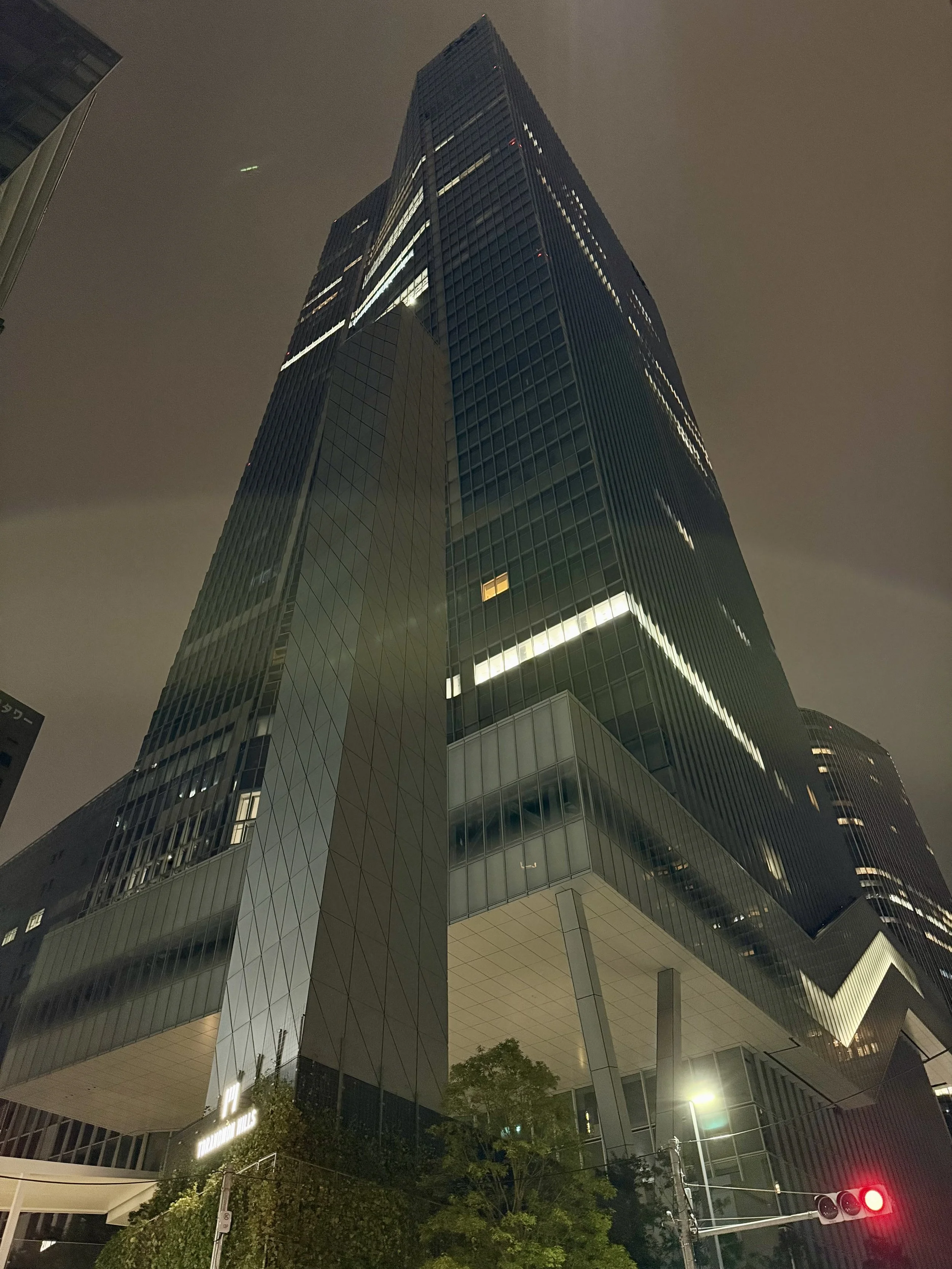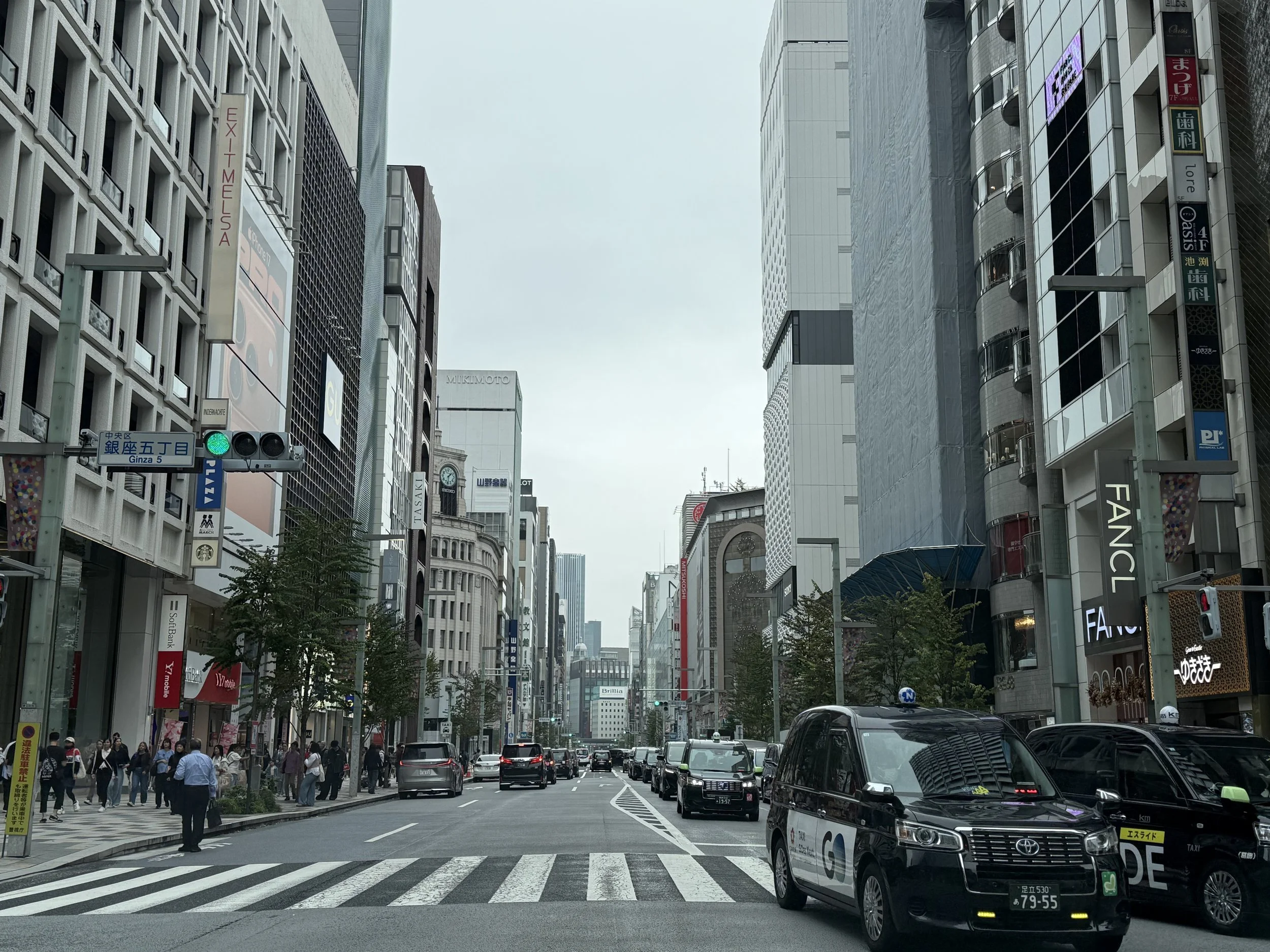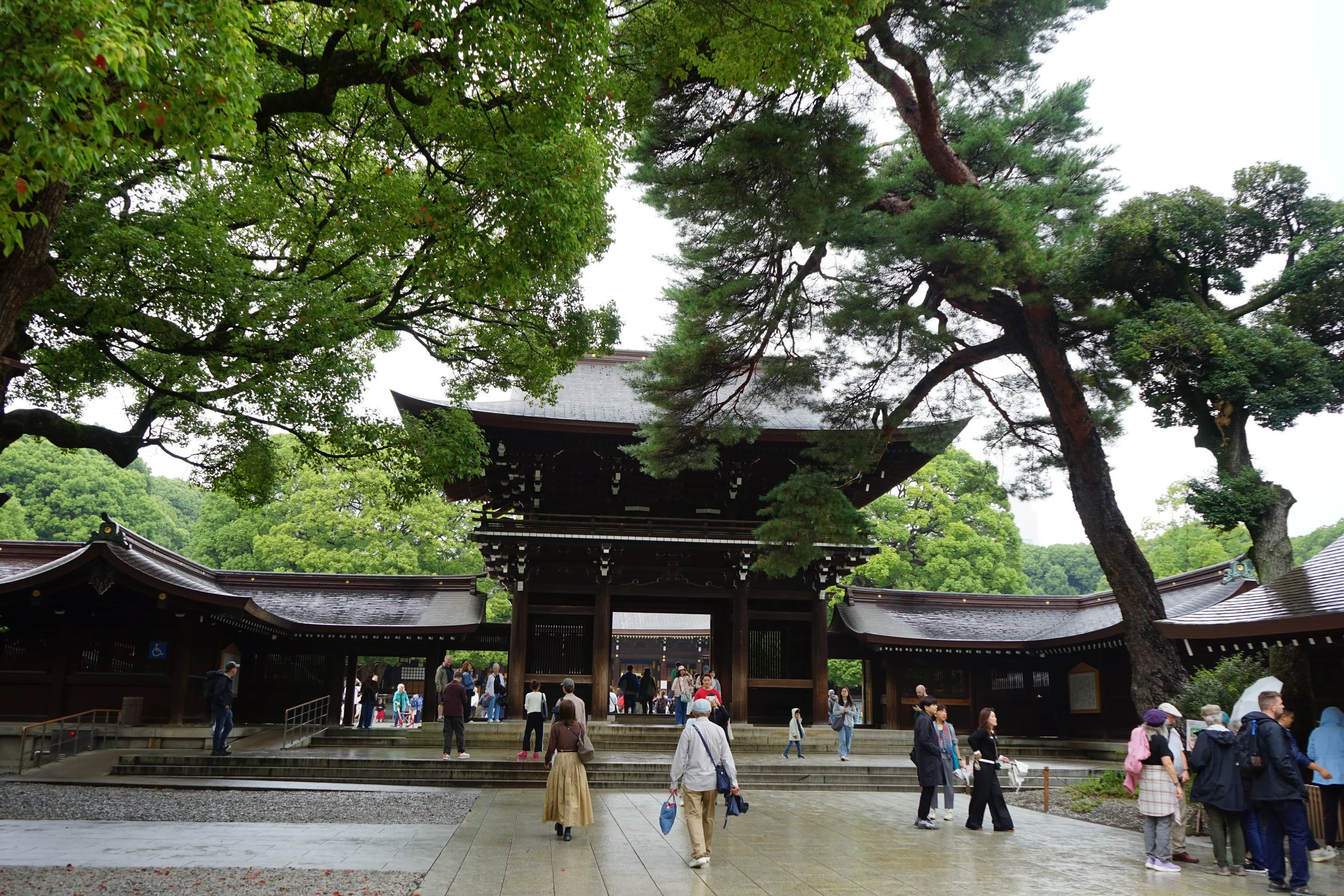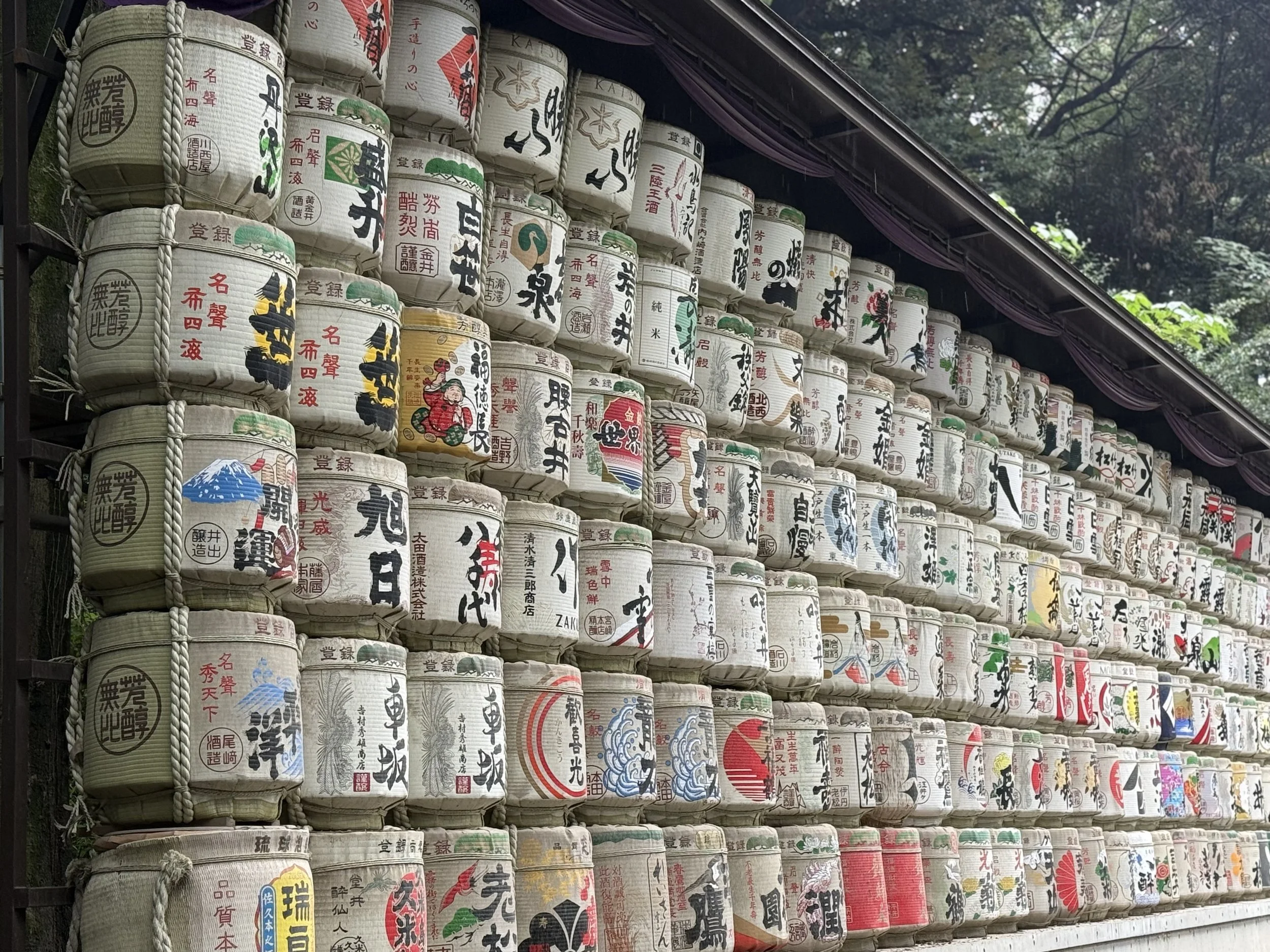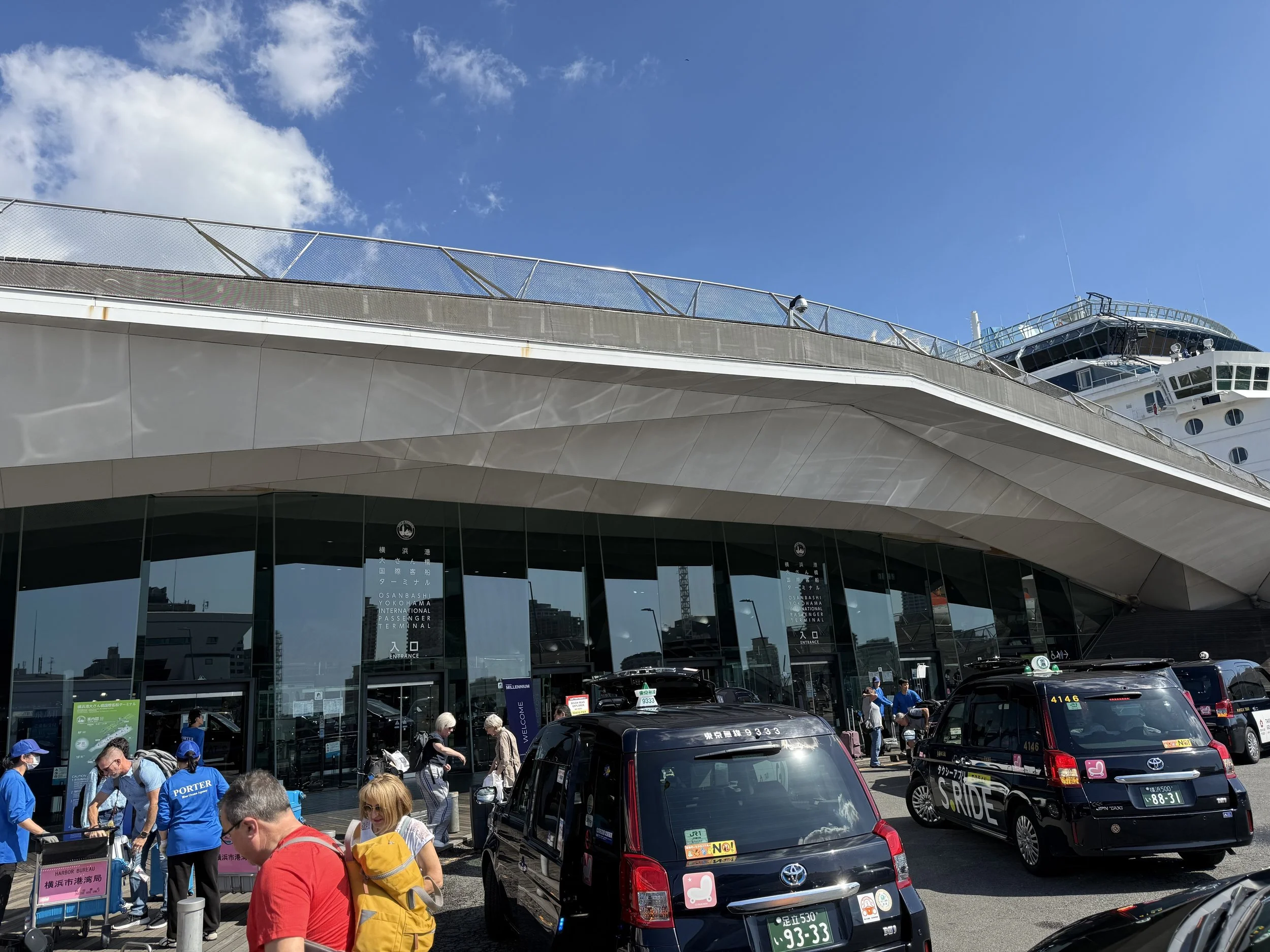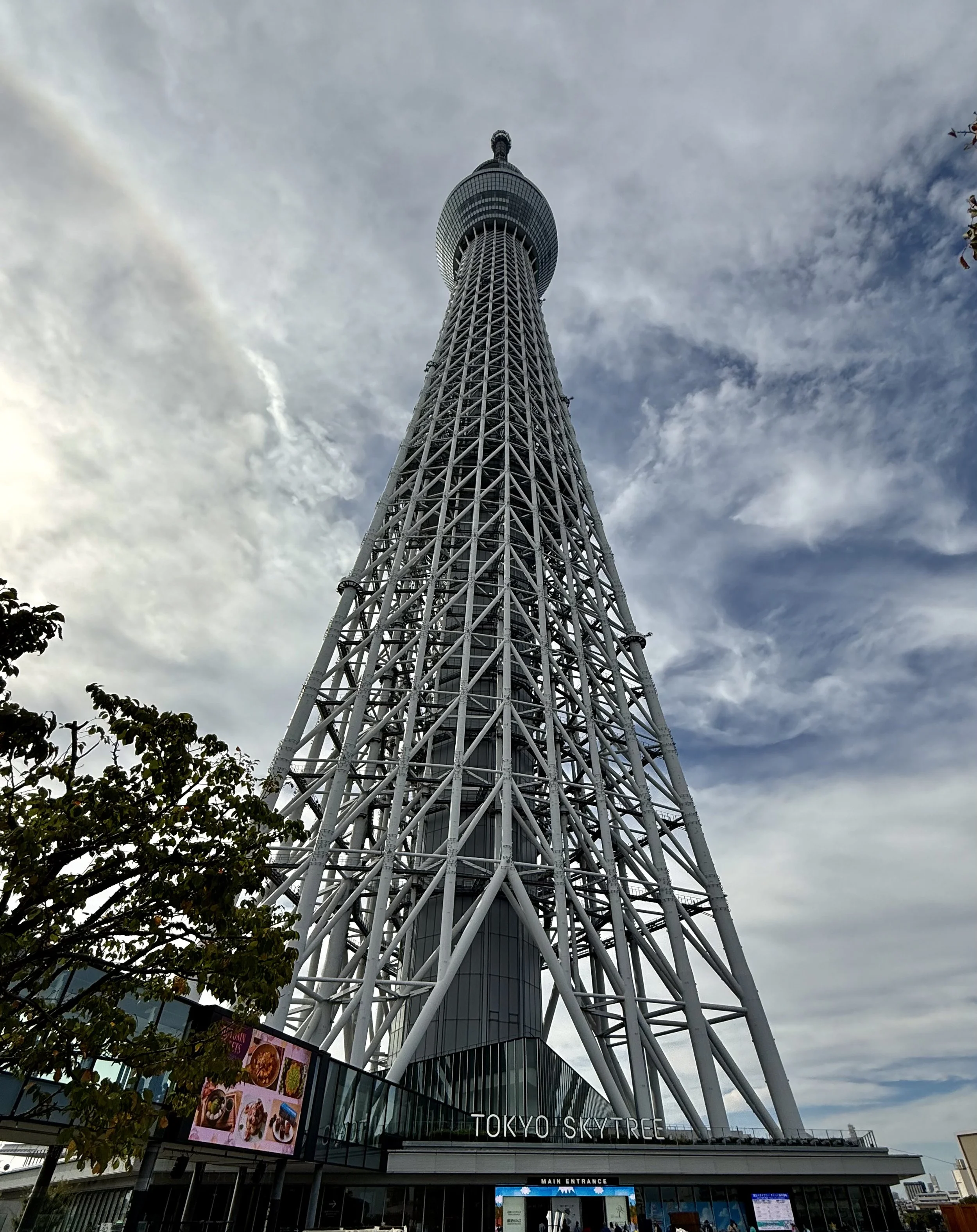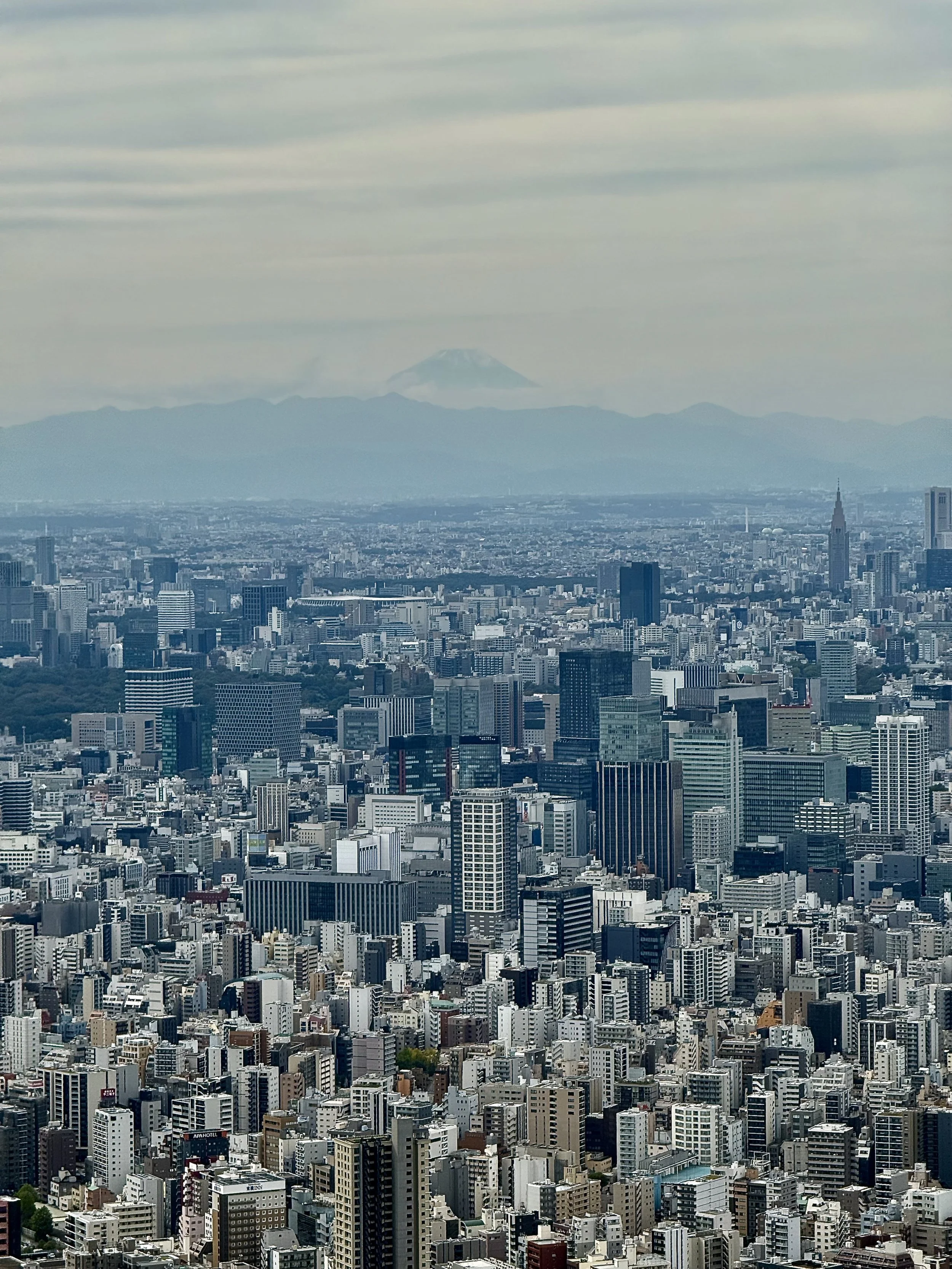Tokyo, Japan
Tokyo Tower from my room window
Day 1: Arrival
My two week trip to Japan began at O’Hare Airport in Chicago. The flight was a direct thirteen hour route to Tokyo, and this time I was traveling with family. Two of my companions were seniors with mobility issues, so we used wheelchair assistance at the airport. The porters were efficient and kind, and the process through the priority security line was quick and well organized.
Our flight was delayed by about forty minutes for maintenance, but once we boarded, everything went smoothly. I ended up in a middle seat in the middle row, not my usual choice but fine for this flight. As usual, I couldn’t sleep, so I played games with my travel companions and watched a few movies. The food was forgettable, but that’s typical of most U.S. airlines.
We landed in Tokyo in the early evening. A team of wheelchair porters met us at the gate and guided us through customs. The process was seamless and far easier than expected after such a long flight. They helped with our bags and took us down to the street level, where we met our hired driver. When the porters learned we had prearranged a car, they looked slightly concerned and explained that only registered taxis are licensed by the government. One of them went to verify our driver’s credentials before giving us a thumbs up to continue.
Our driver was hard to miss, dressed in a silver reflective suit, black and white sneakers, and a matching bucket hat. The ride into the city was quiet, the lights of Tokyo reflecting off the wet pavement. By then, I had been awake for about twenty hours, and fatigue had caught up with me.
Hotel Toranomon Hills
We arrived at Hotel Toranomon Hills, near Shimbashi Station, where the staff greeted us with polite smiles and immediately took care of our luggage. One of our travel companions had already checked in, so we went straight to the room. From the window, Tokyo Tower, painted orange and white, stood clearly against the skyline. I barely had time to take in the view before falling asleep. We had an early morning ahead.
Japan’s reputation for cleanliness is well earned, but one thing stood out right away: there are very few public trash cans. People simply carry their garbage until they find a proper place to dispose of it. Restaurants and shops only accept trash from items bought there, which helps keep the streets orderly and clean, though it takes some getting used to for visitors.
What Tokyo lacks in bins, it makes up for in bathrooms. They are easy to find, spotless, and often equipped with high tech toilets that include heated seats and multiple flush options. Some shrines and older train stations still use squat toilets, which can be tricky if you have bad knees.
Eating while walking is generally discouraged, and many areas have signs reminding people not to do so. Most eat where they buy their food, and even convenience stores often have small counters set aside for that purpose.
The weather stayed mostly overcast while I was in Tokyo, with light rain falling off and on throughout the trip.
The Shinkansen at Tokyo Station
Day 2: Bullet Train to Osaka
The next morning, I left early for Tokyo Station to catch the Tōkaidō Shinkansen to Osaka. Inside the station, everything moved in quiet order with ticket lines, platform signs, and a steady flow of commuters. The train departed exactly at 6:00 a.m., on schedule.
The ride to Osaka took about 2.5 hours and cost roughly ¥14,000 one way. The journey was smooth and silent, with wide seats, clean windows, and views of small towns and countryside along the route. Japan’s trains are known for punctuality, and this one lived up to it.
Ginza
Day 3: Tsukiji Market, Meiji Shrine, Ginza, Tokyo Tower, and Shibuya Crossing
Back in Tokyo, I started the morning at Tsukiji Outer Market. The narrow streets were lined with vendors selling sushi, grilled seafood, tamago omelets, and fruit skewers. People moved quickly between stalls, sampling bites or carrying trays of seafood. Upstairs, I stopped in the small food court for a bowl of ramen that was simple and satisfying. Most stalls open around 5:00 a.m. and close by early afternoon. Vendors accept both cash and IC cards like Suica or Pasmo.
Meiji Jingu Shrine
After breakfast, I took the subway to Meiji Jingu Shrine near Harajuku Station. The entrance is marked by a large wooden torii gate that opens onto a wide, tree lined path leading to the shrine. Partway along, there’s a display of sake barrels, wrapped in straw and stacked neatly in rows. Each one was donated by brewers from across Japan as an offering to the deities. Directly across from them are wine barrels from France, sent in honor of Emperor Meiji’s efforts to open Japan to Western culture.
Sake barrels
The shrine honors Emperor Meiji and Empress Shoken and is free to visit from sunrise to sunset. At the entrance, visitors pause at the water basin to rinse their hands and mouth before entering. The grounds are compact but calm, with smooth gravel walkways and wooden buildings framed by trees. Despite being close to Harajuku’s busy streets, it feels quietly separate, a small pause in the middle of the city.
From there, we took a cab to Ginza, one of Tokyo’s most recognized shopping areas. Wide streets are flanked by department stores, designer boutiques, and restaurants.
Tokyo Tower
Later in the afternoon, I walked to Tokyo Tower. The orange and white structure rises 333 meters above the city and was modeled after the Eiffel Tower. From the main observation deck at 150 meters (¥1,200), the view stretched across Tokyo’s skyline. The top deck at 250 meters (¥3,000) offers an even higher perspective. Inside were souvenir shops and glass floor panels that let you look straight down to the streets below.
Shibuya at night
I stopped at Shibuya Crossing. For me it was a bit overwhelming. When the lights change, hundreds of people cross from every direction at once. The surrounding buildings flash with bright advertisements and large video screens. It is a short moment but captures the pace and energy that define Tokyo.
Osanbashi International Passenger Terminal
Day 4: Yokohama Port
On the final morning, we took a cab to Osanbashi International Passenger Terminal in Yokohama, about 45 minutes to an hour from central Tokyo. When we arrived, porters greeted us with carts for our luggage and guided us to the entrance. The terminal is large and modern, with wide walkways and a curved wooden deck that overlooks the harbor.
Inside, there were check in counters and waiting areas clearly labeled in both English and Japanese. The check in process was quick and organized. Staff verified passports and cruise documents, attached luggage tags, and directed passengers toward the security area before boarding. Everything ran smoothly and efficiently, setting the tone for the trip ahead.
Toyko from the Tokyo Tower
Getting Around and Other Things to Do
Tokyo’s transportation system is one of the most reliable in the world. The Tokyo Metro and Toei Subway serve most major districts, while the JR Yamanote Line makes a convenient loop through popular neighborhoods like Shinjuku, Shibuya, and Ueno. Trains run from about 5:00 a.m. to midnight, and signs are clearly marked in English. Fares range from ¥180 to ¥300, depending on distance.
The easiest way to pay for transit is with a Suica or Pasmo IC card, which can also be used for convenience stores, vending machines, and even some attractions. Visitors can buy these cards at train stations or load them onto smartphones through Apple Pay or Google Wallet. Google Maps and the Tokyo Metro App provide accurate train times and routes in English.
For short trips, taxis are clean, safe, and well regulated, though they cost more than public transport. Many drivers do not speak English, so having your destination written in Japanese helps. The back doors open automatically, and payment can be made by cash, card, or IC card.
If you prefer to explore at a slower pace, Tokyo is also a very walkable city. Many districts, such as Shibuya, Shinjuku, and Ginza, are best explored on foot. Umbrellas are easy to find at convenience stores if the weather turns.
Other popular areas include:
• Asakusa and Senso ji Temple, Tokyo’s oldest temple and one of its most visited landmarks.
• Ueno Park, home to museums, cherry blossoms, and Japan’s oldest zoo.
• Akihabara, known for electronics, gaming, and anime culture.
• Odaiba, a man made island with museums, shopping centers, and views of Rainbow Bridge.
• Roppongi Hills, a modern area with restaurants, art museums, and observation decks.
Last Day: Tokyo Skytree
On my last day in Tokyo, I visited Tokyo Skytree, the tallest structure in Japan at 634 meters. The complex around it includes a shopping center and aquarium, but the main draw is the observation decks. The elevators climb so fast your ears pop before you reach the top. From the upper deck, Tokyo stretches endlessly in every direction, a sea of buildings, rivers, and roads. The air was clear that day, and as a pleasant surprise, I finally saw Mount Fuji in the distance, its snow-covered peak blending with the haze. After several cloudy days, it felt like the perfect farewell view of the city.
View of Tokyo from the Skytree with Mount Fuji in the distance


